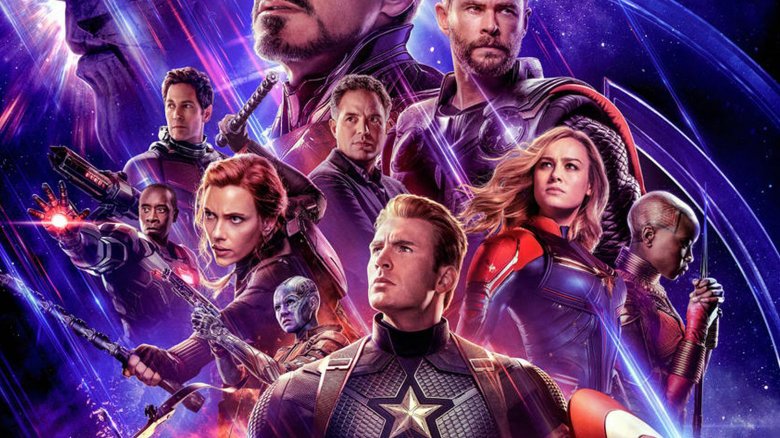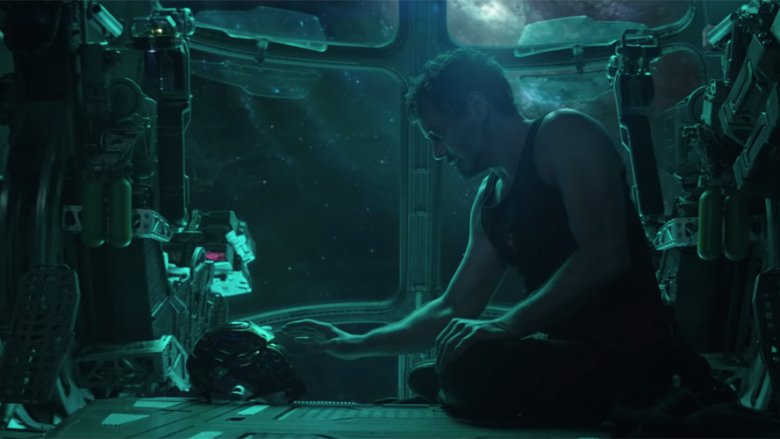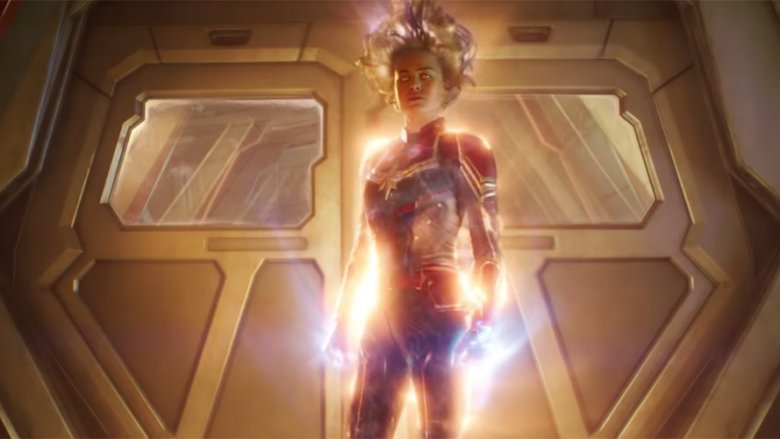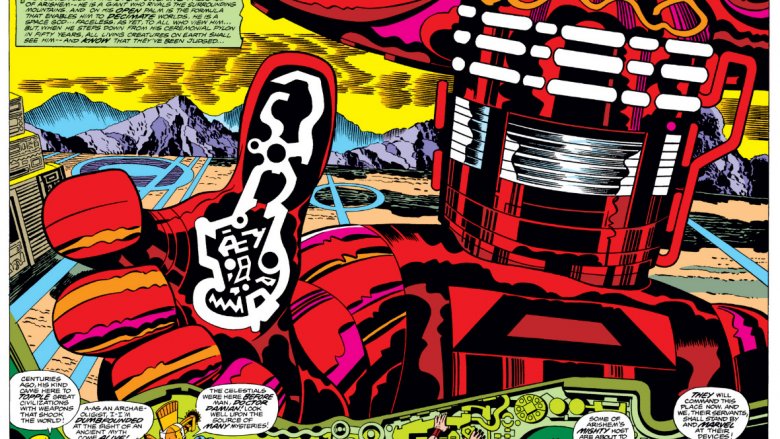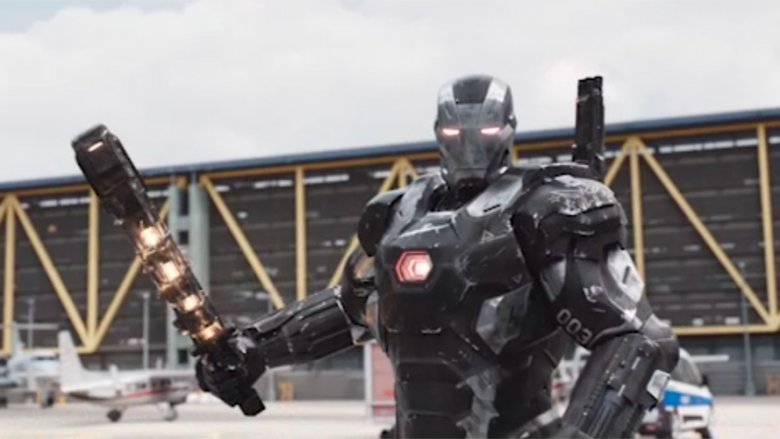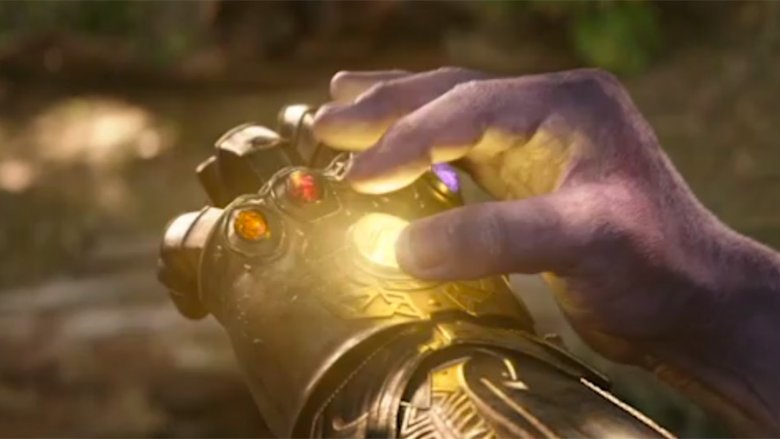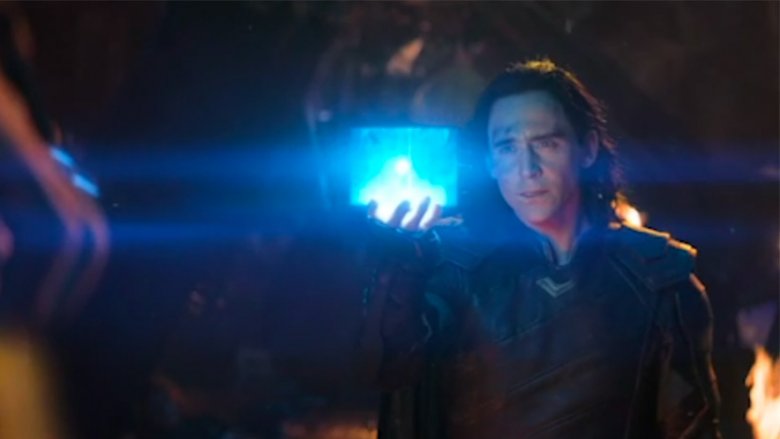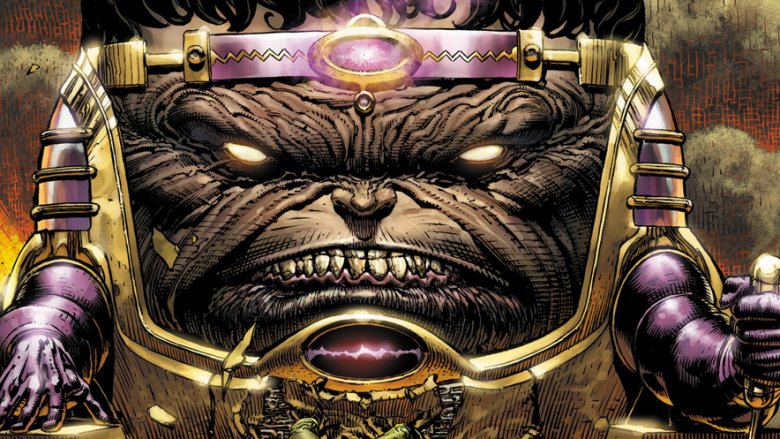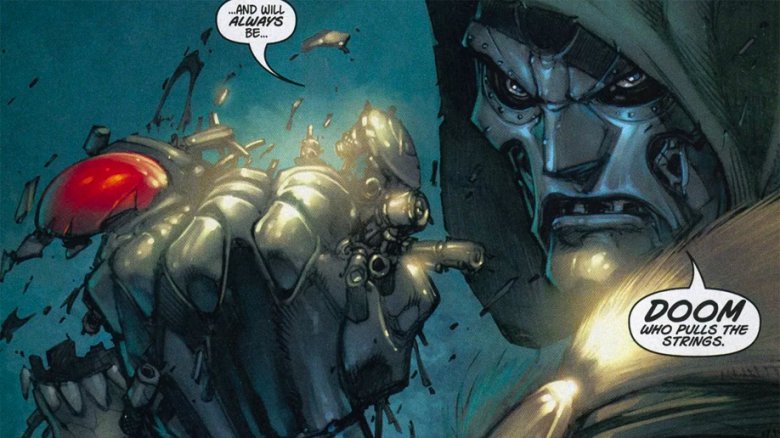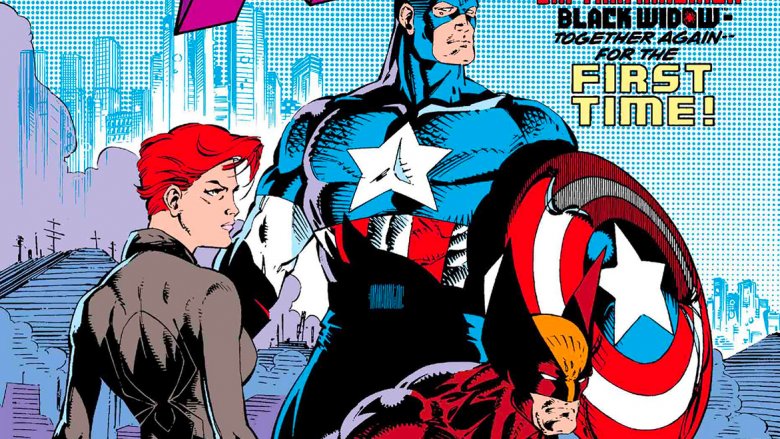What To Expect For Marvel Phase 4
With the arrival of Avengers: Endgame, we're witnessing not only the end of "Phase Three" of the Marvel Cinematic Universe, but quite possibly the MCU as we know it. Sure, there will still be Marvel movies well into the foreseeable future, but this is the fight that virtually every single Marvel movie has been building to since Thanos first appeared in The Avengers to herald the arrival of the Infinity Stones — and, in a lot of ways, since Tony Stark first stepped into the Iron Man armor all the way back in 2008.
As eager as we are for the climactic battle against the Mad Titan, though, we're already asking the question that's going to be on everyone's mind once the credits roll on Endgame: what's next? Only time will tell, but like Doctor Strange, we've looked through 14,000,000 possible futures for the MCU, and have a few ideas on what we might see in Phase Four.
Wait, what's Phase Four?
Those of you who are slightly less obsessive about the MCU might be wondering what exactly we mean by "Phase Four," so here's the quick breakdown. While they all walk a delicate balance of being a standalone feature and a part of a sprawling, much larger saga, the MCU movies are all divided into "phases." The idea is that while they might not necessarily be direct sequels, they each tie into each other thematically, and build to a climax that unifies everything that came before.
Phase One, which began with Iron Man in 2008 and moved through movies like Captain America: The First Avenger, Thor, and the often overlooked Incredible Hulk, was all about introducing each of the superheroes on their own before bringing them together in The Avengers. Phase Two was about building a much larger universe around them. In addition to the sequels for the Big Three, this is the part of the MCU that also introduced Guardians of the Galaxy, and while the big climax was in Avengers: Age of Ultron, Phase Two actually ended with Ant-Man. Between the far-flung classic rock space adventure and the full-on size-changing comedy — not to mention the standard sequels like Iron Man 2 and the action-packed political intrigue of Captain America: The Winter Soldier — it seems like this was a phase built around expanding not just the size of the MCU, but the idea of what a superhero movie could be.
Thus followed Phase 3, which started with Captain America: Civil War and reaches its endgame in... well, Endgame. More than anything else, it seems like this phase has been about loss and about the dire consequences that can come from noble intentions. We've seen superheroes turning on each other (Civil War) and uncovering lies and secrets about their pasts (Guardians Vol. 2, Black Panther, and Captain Marvel). Even the relatively lighthearted movies, like Thor: Ragnarok, have come with incredible losses, like the destruction of Asgard — and that was before half the life in the universe was wiped out in an instant. It's been dark, but you know what they say about when it gets darkest.
Say goodbye to your faves
The future is shrouded in mystery, but one thing you can bank on is that the next few years of the MCU are going to be focused on a very different set of characters than the last few. Part of that, of course, is the inevitable product of the march of time — Chris Evans has mentioned that he'd like to be done with blockbusters and focus on smaller projects, at least for a while, and Robert Downey Jr. has expressed some similar desires to move on from Tony Stark. That makes sense, too, because he's been at this for a while.
For comparison, take a look at James Bond, the only franchise that comes close to approaching the MCU in terms of sheer numbers and pop culture prominence. Roger Moore was James Bond for 13 years, which was considered to be a staggeringly long tenure until Daniel Craig surpassed it — by the time the 25th Bond movie comes out, he'll have been at it for 15. In that time, Moore starred in seven Bond films. Craig's been in four, with a fifth scheduled to conclude his tenure.
Even if you count cameos like the one in Incredible Hulk, and only focus on the Iron Man movies and starring roles like the Avengers films and Spider-Man: Homecoming, Downey has played Tony Stark in nine films over the course of 11 years. Iron Man might be a character built for a medium that's meant to go on forever, but at some point, you can't blame a guy for wanting to take a break.
The New Class
The flip side to that is that there's some good news: while Iron Man and Captain America were the foundation of the MCU for its first decade, Phase Three went hard at introducing a whole new crop of heroes. To say they were successful is putting it so mildly that you might as well write it on a loaf of Wonder Bread.
One of the biggest introductions came when Marvel and Sony finally reached an agreement to bring Spider-Man into the MCU. Not only was Peter Parker's arrival one of the highlights of Civil War — and the prelude to one of the most heartbreaking moments of Infinity War — it gave the Marvel Universe one of its best films in Homecoming. That was definitely not a surprise, since Spidey has always been Marvel's flagship character, but the movie was itself the sign of a change for the MCU. At every turn, Peter consciously makes the choices that Tony Stark didn't in Iron Man, subverting the formula and putting a nice bookend on a character arc that stretched out over ten years.
If Spider-Man was big, though, Black Panther and Captain Marvel were downright massive. Both of those films were the first solo outings for their respective title characters, and both racked up over a billion dollars at the box office. Combine that with the relatively modest (but still pretty profitable) success of the Ant-Man movies, and the MCU has proven that it can build an entire new generation of superhero stars. Don't be surprised if we get a new roster of Avengers led by T'Challa and Carol Danvers soon. Plus, while she was only a kid back in the '90s, Captain Marvel has already introduced us to Monica Rambeau, who once used the "Captain Marvel" name herself in the comics.
The heroes of Marvel Yet-To-Come
Even with its recent additions, the MCU has only scratched the surface of the characters they could bring in for the next round of movies. Admittedly, it's not too likely that we'll be seeing Hellcow, the cow that was bitten by dracula and became a bovine vampire, but hey. If you'd have asked around ten years ago, people would've said the same thing about Rocket Raccoon and Batroc the Leaper.
Right now, we know we're at least getting a glimpse at two big additions to the cosmic side of the MCU. The first, of course, is Adam Warlock, a character who has traditionally been tied in pretty tightly with the saga of the Infinity Stones. He was a key player in the original Infinity Gauntlet comic, but his only presence in the MCU thus far has been a teaser of his arrival in the post-credits scene of Guardians of the Galaxy Vol. 2. It's been announced that we won't be seeing him until Guardians 3, and it'll be interesting to see how he fits in with that crowd in the absence of his role as the less genocidal keeper of the Infinity Stones.
The other is The Eternals, which might be the only Marvel franchise that could be less likely to make it to the screen than the aforementioned talking raccoon. They were created in the '70s by Jack Kirby, the co-creator of virtually every Marvel hero you've heard of except Spider-Man and Doctor Strange, when he returned to the company after a stint at DC. The sci-fi saga was built around humans who had been experimented on by the towering space gods known as the Celestials, who had names like Arishem the Judge and who could destroy entire planets by giving them a thumbs down. Angeline Jolie is attached to star in the film, with Kumail Nanjiani apparently in talks to join her. We've already seen a hint of the Celestials, though — one of them appears on a screen in Guardians of the Galaxy, laying waste to a planet.
Familiar faces, new costumes
One thing that's really important to note about the MCU is how well those movies have managed to transfer elements of superhero comics to the big screen. It's not just stuff like having compelling, emotional moments built around the relationship between a talking raccoon and a tree, either, although that is definitely very important. It's about changing the way those stories work.
It can never be understated that the MCU is built like no other movie franchise. Rather than being entirely standalone, episodic stories, these movies are made like the comics: a shared universe with continuity that runs between all of them to build these huge, multi-movie sagas. The only thing that comes close to that approach is Star Wars, but again, we're more than 20 movies into the MCU, and that's a scale that's unprecedented. As a result, we get a lot of the distinct foreshadowing that readers of superhero comics are familiar with, and we might just get another crucial element as the movies go forward: legacy characters.
The basic idea is that these are characters who take over existing superheroes once their originators have moved on. Jim Rhodes, for instance, was the second Iron Man, and both Sam Wilson and Bucky Barnes have spent time as Captain America. If Downey and Evans are gone, there's nothing that says those characters can't take over their heroic identities, maybe even carrying on in their memory.
That might seem unlikely, but consider this: we already know that's something that happens in the MCU. Scott Lang and Hope van Dyne are both the second people to use the codenames and powers of Ant-Man and the Wasp, respectively. What's stopping Rhodey from being the All-New Iron Man?
The end of Infinity
Another safe assumption to make about the MCU going forward is that whatever storyline weaves through and unites the next 20 movies, it won't be focused on Thanos and the Infinity Stones. Once you gather up the six of them, forge them into a giant golden gauntlet, and kill half of the universe, after all, there's really no way to top it.
There's a reason beyond just a logical progression of events that leads us to think we're going to be done with the stones, though. Marvel Studios President of Production Kevin Feige collectively referred to the first 22 MCU films as "The Infinity Saga." In addition to being a nice designation to fit on the side of a ridiculously expensive box set of Blu-rays (and an expression of how long it's going to feel like if you go to one of those every-Marvel-movie marathons), that's a pretty clear indication that the stories built around the Stones are coming to an end.
As for what's next, well, there are a lot of factors that are going to go into determining that — including the question of who's left standing once all the Endgame dust has settled. No matter what happens, though, moving away from the Infinity Stones is going to be clearing the slate for something new.
Marvel MacGuffins
One of the things that makes it so difficult to figure out where the Marvel movies are going after Endgame — aside from the fact that the only information we have about them at this point is about three minutes of Spider-Man: Far From home — is that eliminating the Infinity Stones doesn't really narrow down our options for what might take their place. In the comic book pages, Marvel has spent about 60 years creating a nearly endless supply of MacGuffins.
If you're not familiar with the term, a "MacGuffin" is a term for a plot device that sparks the inciting incident. It's the thing that everyone's looking for, like the briefcase in Pulp Fiction or the Maltese Falcon in The Maltese Falcon. While the Infinity Stones don't exactly fit the traditional definition — the MacGuffin is traditionally not that notable on its own beyond having people chasing after it — they've definitely fit the bill in films like The Avengers or Guardians of the Galaxy.
Aside from the stones, the most well-known Marvel MacGuffin is probably the reality-altering Cosmic Cube. In the films, though, where it was called the Tesseract, it turned out to be the Space Stone in disguise, much as the Eye of Agamotto was revealed to be the Time Stone. Still, there's no shortage of options, including one that almost made it to the screen. Before it became Civil War, there was a chance that the third Captain America film could've focused on the Madbomb, a weapon of mass destruction that drove ordinary people into a killing frenzy. They might just build the next Phase around that. Or the Nega-Bands. Or the Chalice of Ruins. Or the Darkhold. Or... well, you get the idea.
The new Big Bad
Really, the direction of Phase Four is going to depend largely on who winds up stepping into Thanos' considerably large golden boots to be our next big villain. That's the big question, and while we've seen plenty of Marvel heavyweights like the Red Skull, Loki, Ultron, and Hela, that's the nice thing about superheroes. They never seem to run out of villains.
If they want to bring in another cosmic threat, Annihilus is the obvious candidate to fill a similar role. Like Thanos, he's mostly been featured in stories that spread to the ends of galaxy, but while Thanos' finger-snap is devastating, it's also pretty impersonal. Annihilus, on the other hand, is the type to personally lead a mindless army across entire planets, devouring everything in his path and leaving nothing but misery in his wake.
That said, it seems much more likely that after spending ten years building up a spacefaring threat, the next phase of Marvel movies might want to hit something a little closer to home with a human villain. Again, there are plenty of possibilities — Spider-Man's old foe Doctor Octopus has spent more than a few years as a world-beater, for instance — but there's one high-tier, A-list villain whose absence in the Marvel Cinematic Universe thus far is notable for a couple of reasons, and we're not talking about M.O.D.O.K. Of course, this character's appearance is contingent on a few things.
Four of a kind
Say what you will about corporate consolidation, but for the first time ever, there's a chance at getting a truly unified Marvel Cinematic Universe. WIth Disney's purchase of Fox, the few homegrown franchises that haven't been available to Marvel Films are suddenly back on the table, and it's easy to argue that the one with the most potential is the Fantastic Four.
They are, after all, the first Marvel comic, the book that launched the Marvel Universe in 1961 and paved the way for everything that came after. But as good as the FF might be on their own, their value to the MCU goes well beyond Reed, Sue, Johnny, and the Ever-Loving Blue-Eyed Thing himself, Ben Grimm. It's everything that comes with them. They were already the book that introduced the world to Black Panther and the Inhumans, but they also bring the Negative Zone (Annihilus's home dimension), the Silver Surfer, and some of the Marvel Universe's most notable villains, particularly Galactus and Doctor Doom.
As fun as it would be to see the MCU have to deal with the problem of a giant purple man who wants to eat the Earth, it's Doom who's the most intriguing. He's arguably the single best villain in the Marvel roster, and one of the few characters who could present a believable threat to everyone from Spider-Man to Thor. There are three existing attempts at bringing them to film and none of them have worked, but if anyone can do it, it's the people who made Groot a household name.
Mutant misadventures?
For a lot of fans, the Fantastic Four pale in comparison to the big acquisition from the Disney/Fox deal: the X-Men. On their own, they're a franchise that's about as massive and complicated as the rest of the Marvel Universe put together, and they also have their own sprawling, mostly successful film franchise.
The MCU so far has gone out of its way to carve out a world without mutants, to the point of referring to Quicksilver and the Scarlet Witch by a similar but legally distinct M-word when they showed up at the end of Captain America: The Winter Soldier. Now that they've got everything from Terrigen Mist to a population that was depleted by magic space rocks, there are plenty of weird, comic-booky ways to reintroduce that concept. If, that is, they decide to go that route.
If the X-Men do show up in the MCU during Phase Four, they might just wind up being used much more sparingly than they have been in their own film series. If nothing else, it would allow fans who were still attached to the Fox X-Men series to have some breathing room before reintroducing characters like Storm or Jean Grey. Of course, with all that said, it bears mentioning that Wolverine's been an Avenger since 2004, and a whole lot can happen in 22 movies.
